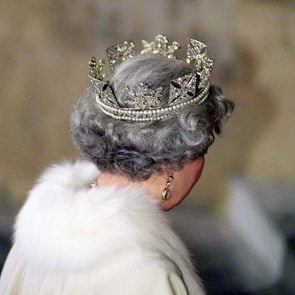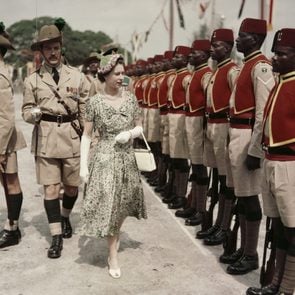Will Princess Anne’s Title and Role Change Now That the Queen Has Passed?
Updated: Jan. 05, 2023
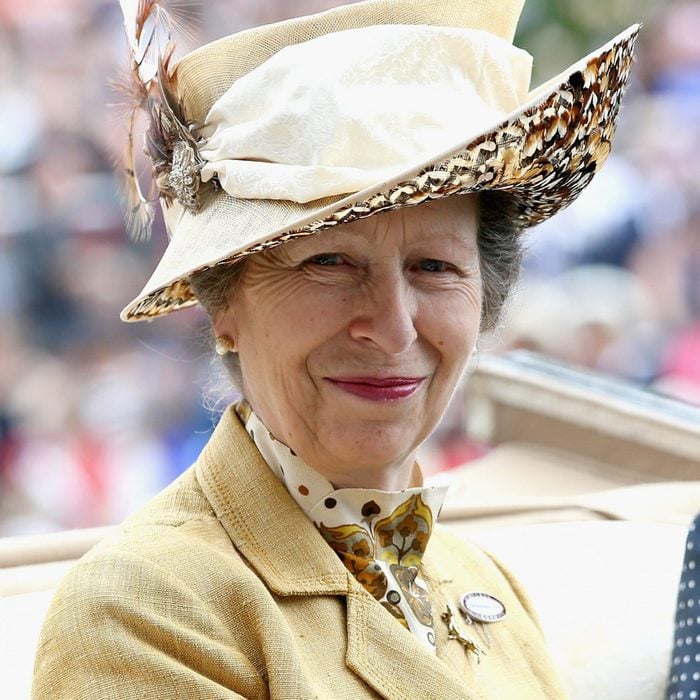
How the life and duties of Anne, the princess royal, may change now that her brother Charles is king
All eyes have been on the various royal family members since Queen Elizabeth’s death on Sept. 8, 2022. Anne, Princess Royal, recently garnered renewed attention for accompanying her mother’s coffin on the six-hour drive from Balmoral Castle, where she died, to Edinburgh, Scotland, and then honoring her mother at the Vigil of the Princes, a ritual previously undertaken only by male family members.
Anne is Queen Elizabeth II‘s second child and only daughter, known for her sharp tongue, sense of duty and ability to stay (mostly) scandal-free. The 72-year-old princess is not as high profile as some of the other royals, and despite being the queen’s second-born child, she’s now far down the line of succession on the royal family tree. Yet she’s been a dutiful daughter, undertaking hundreds of official engagements a year.
Now that Charles is king, however, the public is wondering what will happen with his siblings, including Princess Anne, who’s known as the hardest-working member of the family. Will she keep her title of princess royal, or will she get a new one, similar to the way Camilla went from a duchess to queen consort? We talked to royal experts to find out just who this under-the-radar royal is and how her role will change now that her brother is on the throne.
Why is Princess Anne called the princess royal?
Anne’s unique title may have you wondering about her rank and what “princess royal” means exactly. “The title of princess royal has been around since the 1630s and is awarded to the eldest daughter in the royal family—though very much at the sovereign’s discretion,” says historian and author Tony McMahon. “It’s not an automatic title, so there have only been seven princesses royal in the last 350 years.”
The title of princess royal doesn’t come with any official duties, responsibilities or royal perks. “It brings no special precedence and is different from a dukedom given to princes,” says royal expert and author Marlene Koenig.
For example, dukes rank highest in the British aristocratic peerage system, and although they no longer have much political power, they may have inherited land or money along with their title. That’s even the case with the royal family. When his father ascended to the throne, Prince William became the Duke of Cornwall and inherited the Duchy of Cornwall—worth $1.3 billion.
Initially, the reluctant Anne may not have wanted the title of princess royal. “There were reports in the press after Anne reached 18 that she would be created princess royal, but this did not happen, largely on the assumption that she was not interested in the title,” Koenig says. “It was not until 1987 that the queen bestowed the title on her [at age 36].”
On a personal level, McMahon says, Anne sometimes gave the impression of carrying a great burden as princess royal. “She once snapped at a journalist, ‘I didn’t ask to be born a princess!'” he says.
Why isn’t Princess Anne next in line for the throne?
Admittedly, the rules of succession can be confusing, especially for Americans. But they help explain why Anne, Princess Royal and the queen’s second-born child, is 16th in line for the throne.
To start, the current monarch—Anne’s brother King Charles III—already has children and grandchildren, so succession follows his direct descendants first. Plus, until the Succession Act of 2013 (which only applies to those born after 2011), succession followed the male line.
So after Charles, the crown goes to his eldest son, Prince William, followed by his children. From there, it goes to Charles’s second son, Prince Harry, followed by his children. Next up: the queen’s second son, Prince Andrew, and his children and grandchildren. Her third son and youngest child, Prince Edward, is next, followed by his children. Then, and only then, does the throne go to Anne, Princess Royal.
Might Prince William’s daughter, Princess Charlotte, be named princess royal? It’s possible—but only after William becomes king, as the title goes only to the daughter of the monarch, and after Princess Anne has died. “Anne holds the title for life, so if Charles had a daughter, she would be unable to become princess royal until Anne died,” McMahon says.
The same rules apply to Charlotte, although Koenig thinks this may not happen. “Perhaps Anne will be the last princess royal,” she says. “With gender-equal succession, why should Charlotte be given the title princess royal when her younger brother [Prince Louis] may be created a duke on his wedding day?”
Because Charlotte was born in 2015, the Succession Act applies to her, so she is in direct line to the throne, just after her older brother, Prince George. As such, she may deserve a title more equal in rank to duke.
Will Princess Anne’s royal title change now that Charles is king?
Unlike many of the other senior royals, Anne, Princess Royal, will have no change to her title. “Anne is the princess royal for life,” Koenig reiterates.
The fact that princess royal is a lifelong title helps explain why Queen Elizabeth, who was also the oldest daughter of a sovereign, was never named princess royal: One already existed while she was a princess. The previous princess royal, Princess Mary, was Elizabeth’s aunt and the daughter of the previous king, Elizabeth’s grandfather, George V. (Downton Abbey fans might remember her onscreen depiction in the series’s first big-screen movie.)
“Queen Elizabeth II was never princess royal because George V’s eldest daughter survived her brother [Elizabeth’s father] George VI’s reign and died in 1965, by which time her niece was queen,” McMahon says. “Confusing, eh?”
We’d say! But it does help explain why Princess Charlotte cannot be named princess royal until her father is on the throne and Anne is dead.
What does Princess Anne do?
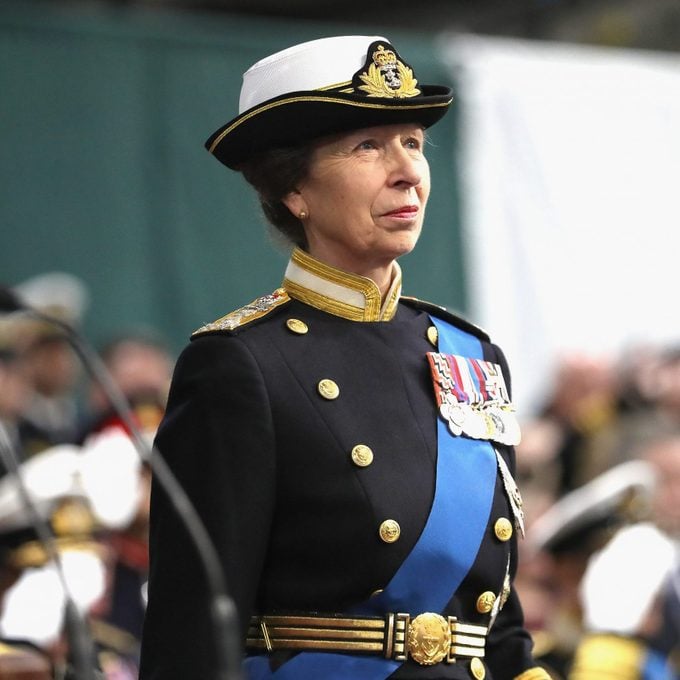
If you’re wondering if Princess Anne is a working royal, the answer is a resounding yes. “In 2021, the princess royal carried out 397 engagements, two more than her brother [Charles],” Koenig says. This makes her the royal who carried out the largest number of engagements of the year.
The philanthropic princess
On top of royal engagements, Anne, Princess Royal, “has more than 300 patronages, including Save the Children,” Koenig says. “These organizations ran the gamut of sports, science and military. She is the president of the British Olympic Association and was a member of Team Great Britain in 1976 in the equestrian three-day event.”
Because of this, Princess Anne has become known as the hardest-working member of the royal family—although she generally stays out of the spotlight and doesn’t advertise that fact. “It’s not just about, ‘Can I get a tick in the box for doing this?'” she told Vanity Fair in 2020. “No, it’s about serving. … It comes from an example from both my parents’ way of working and where they saw their role being.”
With this endless devotion to duty, “she has reinvented the position of princess royal as something resolutely philanthropic,” McMahon says. “She’s cautioned younger, more impetuous royals to follow her example in diligently carrying out charity work without being glitzy and showy about it.”
In and out of the spotlight
In her younger years, though, Princess Anne was a higher-profile figure. As an equestrian, she found herself on TV frequently. “In 1973, her marriage to fellow horse lover Captain Mark Phillips was a massive royal event,” McMahon says. “She was also the subject of an unsuccessful kidnap attempt at gunpoint on The Mall [in London] in 1974, which may have caused her to seek a lower profile.” As the story goes, when the gunman demanded she go with him, Princess Anne responded with her trademark sharp tongue: “Not bloody likely!”
Things changed in the following decade. “Possibly the various scandals and dramas that beset the royal family in the 1980s and the collapse of her own marriage, eclipsed by the travails of Charles and Diana, made her retreat from the limelight,” McMahon says. “But there’s also her character, which is by her own admission thoroughly English in an old-fashioned way. She goes about her royal duties with minimum fuss. So her work as president of Save the Children U.K.—a position she’s held since 1970—isn’t trumpeted across the media, even though it’s potentially very photogenic and TV friendly.”
Anne continued her royal duties right until the end of her mother’s life: She accompanied her mother’s coffin by car on the long drive from Balmoral Castle to Edinburgh prior to Queen Elizabeth’s funeral and also stood watch at the Vigil of the Princes in Edinburgh’s St. Giles’s Cathedral—the first female royal to do so—a rite Princess Anne and her siblings later repeated at Westminster Abbey in London.
“I was fortunate to share the last 24 hours of my dearest mother’s life. It has been an honor and a privilege to accompany her on her final journeys,” she said in a statement.
Will her role change with Charles in charge?
Charles reportedly wants to pare down the monarchy, but could Princess Anne actually take on a bigger role? “Absolutely, as she will be one of the two major female supporters of the king, with Camilla,” Koenig says. “She is not slowing down and will probably take on some of her mother’s patronages.”
Although Prince William, Princess Kate, Prince Harry and Meghan Markle get most of the royal publicity these days, McMahon says, the original Fab Four were Queen Elizabeth’s children, who captured the nation in the last half of the 20th century. “It’s more than likely that King Charles will turn to his siblings to shoulder the burden of ruling the kingdom, especially given his age,” he says.
The king will probably avoid leaning on Prince Andrew, however. His brother is no longer a working royal due to accusations of sexual abuse. “Anne is the least problematic from a PR point of view,” McMahon says. “And she’s broadly liked by the public, who warm to her no-nonsense persona. She may assume the role of Counsellor of State, empowered to step in if Charles becomes in any way incapacitated.”
Usually, Counsellors of State include the next four adults over 21 in the line of succession, but because so many of them aren’t working royals, this may include Anne. King Charles’s role in government is, however, very limited, and Anne wouldn’t have any political power either.
Anne, Princess Royal, may also become a crucial liaison with one specific part of the U.K.: Scotland. “As both the Commonwealth and the union with Scotland come under growing strain, Anne may be deployed as the royal that keeps the Scottish onside,” McMahon says. “In Scotland, she is known for sharing her mother’s love of the country. Anne’s enthusiasm for Scottish rugby is well evidenced, and she is patron of the Scottish Rugby Union. This counts for something north of the border!”
She appears to already be making efforts in the country. In addition to traveling with her mother’s coffin to Edinburgh, Anne visited Glasgow, Scotland, to accept condolences from city officials and locals.
Why don’t Princess Anne’s children have titles?
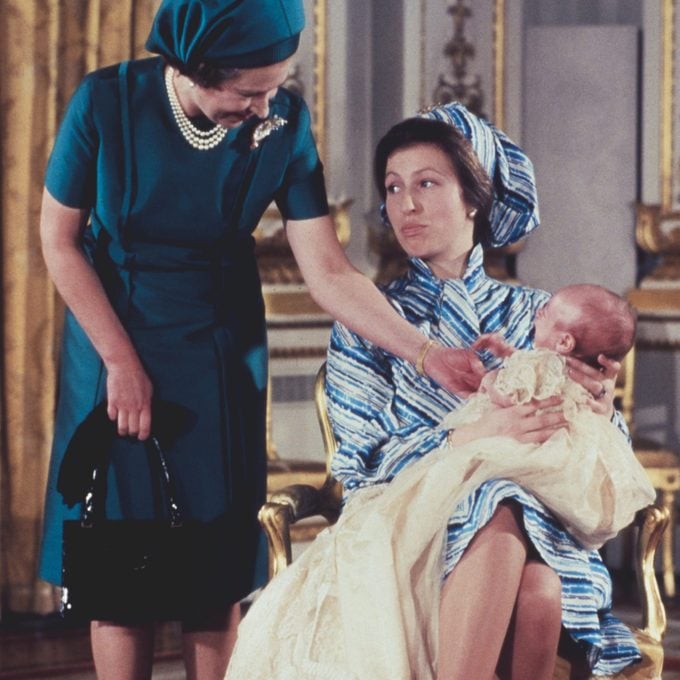
Here, again, are those pesky rules of royalty. As dictated by the Letters Patent that Queen Elizabeth’s grandfather, King George V, put into effect in 1917, grandchildren of the monarch can become princes and princesses only through a male line.
That said, exemptions can be made: For example, “when [then-princess] Elizabeth was pregnant with Charles, her father, King George VI, issued a Letters Patent that gave the HRH [His/Her Royal Highness] and title prince or princess to her children before she became queen,” Koenig says. “If the king had not done this, Charles and Anne would have been styled as the Earl of Merioneth and Lady Anne Mountbatten, taking their rank from their father, the Duke of Edinburgh [the queen’s husband, Prince Philip].”
According to these gender-specific rules, Princess Anne’s children, Peter Phillips and Zara Tindall, might have been out of luck when it came to the titles of prince and princess. But royal experts think Queen Elizabeth offered to give Anne’s children titles.
A refusal of titles
“It’s well known that Princess Anne and her ex-husband and father of their children, Captain Mark Phillips, rejected titles for their children,” McMahon says. “So they do not put HRH before their names. They are still in line to the throne, but the late queen’s offer of titles was firmly rejected. This is very unusual and means that Peter Phillips is the first grandchild of a monarch in 500 years to have no title.”
Why might Anne have wanted to avoid titles for her kids even though they were Queen Elizabeth’s grandchildren? “One reason why titles may have been rejected is that Mark Phillips was a commoner, and even though attitudes have changed, the ancient tradition was that children could only be designated princes and princesses if their father was a bona fide royal,” McMahon says. “The queen tried to override that, but her daughter, Anne, decided to stick with tradition.”
Koenig says that although there were reports that Mark Phillips was offered an earldom and turned it down, Princess Anne’s son said he wasn’t offered one—and didn’t want it anyway.
Time for change
If all this sounds a bit outdated, that’s because many people believe it is. Koenig thinks the royal rules need to change so that titles can pass through the male or female line. It’s a necessary follow-up to the Succession Act of 2013, which removed gender from the line of succession.
“Titles are [still] passed through the male line, not the female line, which is why it is imperative that Charles issue a new Letters Patent to deal with the succession of the eldest child, not the eldest son,” she says.
Will Princess Anne’s children receive titles now?
As Princess Anne might say, “Not bloody likely.” Peter and Zara wouldn’t be automatically offered titles at this point, especially considering they are not working royals, although they may benefit from trust funds and some special bequests from Queen Elizabeth’s net worth.
“Anne’s children will not be given titles—they are not royals but are members of the larger royal family because their mother is a princess,” Koenig says. Plus, they have already been able to live successful lives out of the royal limelight, with professional equestrian Zara earning an Olympic silver medal and Peter serving as director of a sports management company.
Anne, Princess Royal, also feels her children may have been better off without royal titles: “I think it was probably easier for them, and I think most people would argue that there are downsides to having titles,” she told Vanity Fair in her 2020 interview. “So I think that was probably the right thing to do.”
Sources:
- Tony McMahon, historian and author
- Marlene Koenig, royal expert and author
- The Royal Family: “Succession”
- The Royal Family: “The Princess Royal”
- The Royal Family: “A Statement from the Princess Royal”
- The Royal Family: “The Princess Royal: 70 Facts at 70”
- Vanity Fair: “Princess Anne Opens Up About Her Lifetime as a Royal”
- The Royal Family: “Counsellors of State”

